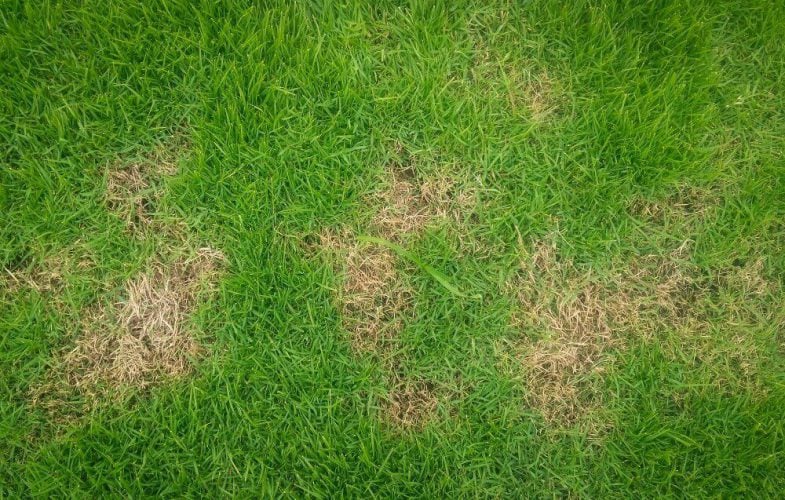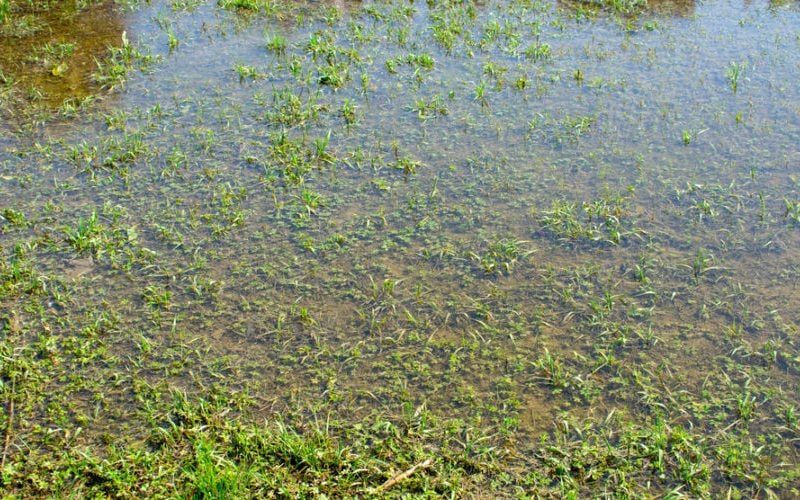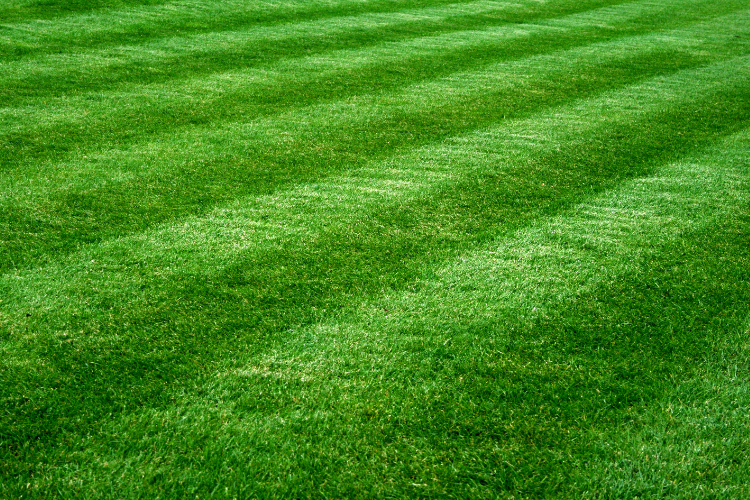What Is Snow Mould?
Snow Mould, also known as fusarium patch is a spore based fungal disease that appears on the lawn as yellowish or brown patches, occurring chiefly in Autumn, during Winter, and into Spring. It is most often noticeable after any snow thaw. There are two types of Snow Mould: grey (typhula incarnata) which commonly occurs after prolonged periods of snow cover, and pink (microdochium nivale) which becomes active in cool, wet conditions.
Causes of Snow Mould
In the run up to winter, it is easy to neglect properly caring for our lawns. As the vibrancy of autumnal trees gives way to frosty air and dark nights, the temptation to stay warm indoors and overlook our lawns is all too real. However, against our better judgement, lawn care during these winter months is just as important as during the rest of the year.
Grass growth slows down significantly during winter, but despite grass being dormant it does not stop growing completely, and neither should mowing your lawn. There are many factors that can contribute to Snow Mould and other fungal infestations, such as leaving scattered leaves and organic debris to form a carpet over the lawn, frequently using blunt blades when mowing, and attempting to mow when your lawn is saturated or covered in frost.
Snow may look beautiful in your garden, and though it doesn’t necessarily cause problems for grass itself, it can lead to the later development of Snow Mould. This can occur when fusarium fungal spores which are already present in your lawn, or alternatively, have been blown in on the wind from elsewhere outside the garden. The snow coverage creates a perfect nursery environment for this particular fungus – who prefer cool, moist conditions.

What Does Fusarium Patch Look Like?
How does snow mould affect your lawn
Melting Snow
While grass needs water in order to survive, just as humans do, it’s possible for grass to have too much water. This is called becoming waterlogged. It can often happen when snow melts on ground that was dry and compact. The water can’t drain away and therefore sits on top, damaging the grass.
Moss loves growing on waterlogged grass, impacting the look of your lawn and requiring moss control treatment or scarification to remove it.
Ensuring that your lawn has an aeration treatment at least once a year helps to keep the ground from becoming compact during the year. It means that when winter comes around, snow melt water can drain away.
Frost
Frost can also affect your lawn. When it’s frosty, ice crystals form on your grass and the leaves of the grass itself can also freeze. Usually, this isn’t too much of a problem as the grass simply defrosts as the temperature increases.
However, walking on frosty grass can damage it. The weight of your step snaps the frozen leaves. This doesn’t cause long-term problems, but can impact the look of your grass in the short-term.
Preventing Snow Mould
- Aeration: Making sure your lawn is fully aerated before winter helps water to drain through your lawn. This lowers the risk of extreme wet conditions which otherwise allows snow mould to thrive.
- Raking & Shovelling: Keeping leaves from building up on your lawn and shovelling snow will help to prevent fusarium patch from developing.
- Airflow: It can also be helpful to improve the airflow through your garden by pruning and cutting back large plants that could restrict air movement. This will help moisture dry faster from your grass and help to minimise the chance of snow mould developing.
Treating Snow Mould
At Greensleeves we work hard throughout the year to control Snow Mould present in your lawn with our specialist seasonal treatments. We can remove moss and damage from snow mould with the process of scarification. This mechanical procedure involves a vigorous raking technique which removes infected and dead grass, stripping the lawn back and enabling the grass to have the opportunity to develop fresh growth.
If the cause of the fungal disease is due to excessive moisture and compaction, hollow tine aeration will help to improve surface drainage and equip your lawn with the tools to protect itself from future fungal invasions.
It is quite possible to treat Snow Mould rapidly and our experts at Greensleeves Lawn Care have the perfect formula to do so. We also strongly recommend removing any leaves or debris by gently raking or using a leaf blower.
Contact Us
For more information about our Greensleeves experts, annual treatments and how these can benefit your own lawn get in touch or explore our website to learn more about the importance of caring for your lawn year round. We can diagnose problems as well as providing effective and lasting solutions.





